“The Athens Biennale, curated by Stefanie Hessler, Kostis Stafylakis and Poka-Yio, is definitely not dry. It’s sensual as fuck. It smells of new plastics toys, it’s glossy, transparent vinyl, it’s LEDs, it’s pop songs echoing in your head, it’s a motel lobby and abandoned buildings. As a Latin American artist, I empathize without wanting to. I recognize myself in the show’s peripheral aesthetics.”
By Carla Garlaschi | Images courtesy Athens Biennale
Sitting at a purple plastic desk in a 9th floor hotel room in central Athens, I look out the window and see the Acropolis, in mid-distance. It is surrounded by construction cranes which I haven’t noticed during the day, working nightshifts on some endless face-lift. The timeless temple makes me think of my art history professor, Claudia Campaña, at the Chilean Catholic University and of her straight hair. In my panoramic view, two structures relate. To my left, the ancient ruin and cradle of Western culture. And to my right, a concrete skeleton, an unfinished ten-story building that looks like the perfect location for a trap video.
Last year, before I went to see documenta 14 in Athens, I nerded-out in my pyjamas, watching The Destruction of Europe, a series of video-talks that Paul B. Preciado’s and Franco Bifo Berardi produced for the educational program. The exhibition itself seemed dry and necrophilic to me, like a large institutional intestine. I mention this here because, even though documenta and the Athens Biennale are very different organisms and have a flowered history of animosities between them, I cannot avoid comparing them. Talking to foreign and local artists, I understand that I am not alone. The Athens Biennale, curated by Stefanie Hessler, Kostis Stafylakis and Poka-Yio, is definitely not dry. It’s sensual as fuck. It smells of new plastics toys, it’s glossy, transparent vinyl, it’s LEDs, it’s pop songs echoing in your head, it’s a motel lobby and abandoned buildings. As a Latin American artist, I empathize without wanting to. I recognize myself in the show’s peripheral aesthetics. They talk to me, and I notice, they are also a remix of Athens’ downtown streets.
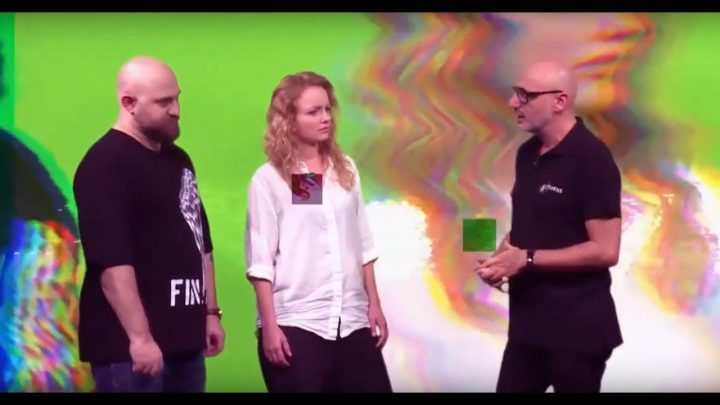
ALIENS
Morina Al Qadiri’s lo-fi science fiction videos The End and The Craft (both 2017) present, through an intimate family narrative and via architectural installation, the universe of a kid who experiences the Americanization of post-Gulf War Kuwait. Children’s drawings of aliens are superimposed onto 90’s home movie footage projected inside an installation mimicking a diner. Passing through a door I am confronted with a levitating hamburger that asks me “are you really where you think you are?” The Swedish artist Linnéa Sjöberg also seems to engage in some sort of re-staging of the marginal. Originally, her Salong Flyttkartong (2011), which literally translates to “Salon Moving Box,” was an illegal, traveling tattoo shop that fit into a cardboard box. It appeared outside the art world, at wild parties or in some weird corner of tattoo conventions. Today, Linnéa talks to me about how distant those times feel to her and how aware she is of the absurdity of re-enacting – and, I think, possibly exoticizing – herself. Her installation is an ongoing faux-party, stocked with her Swedish friends who flew in to go crazy and get tattooed on a daily basis. To me, having first encountered the phenomenon of “Swedes abroad” in Mallorca, working and partying with them in bars, I also see her installation, whether it’s intended or not, as an example of the dramatic personality shift that Swedes undergo as soon as they step outside of the welfare system and morph from responsible- boring into fun-loving party-animals.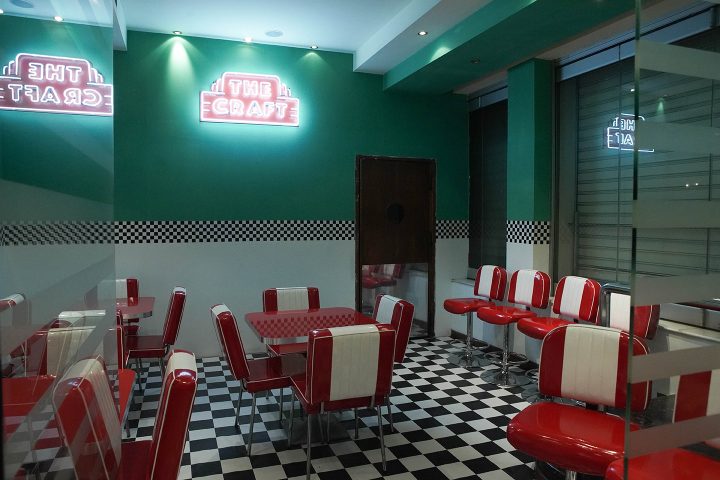
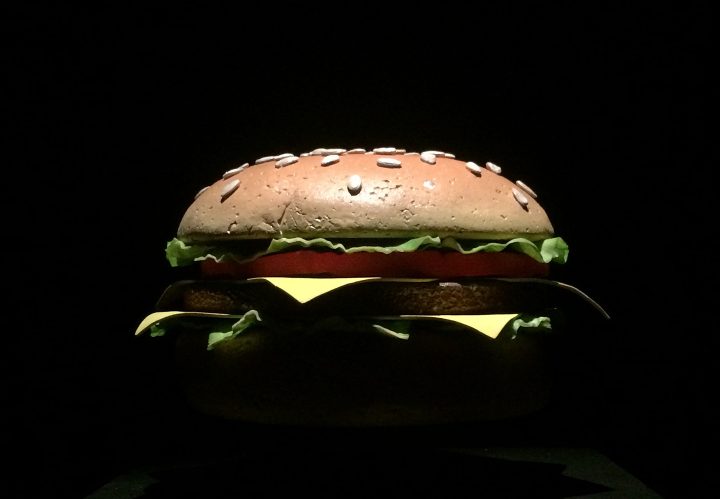
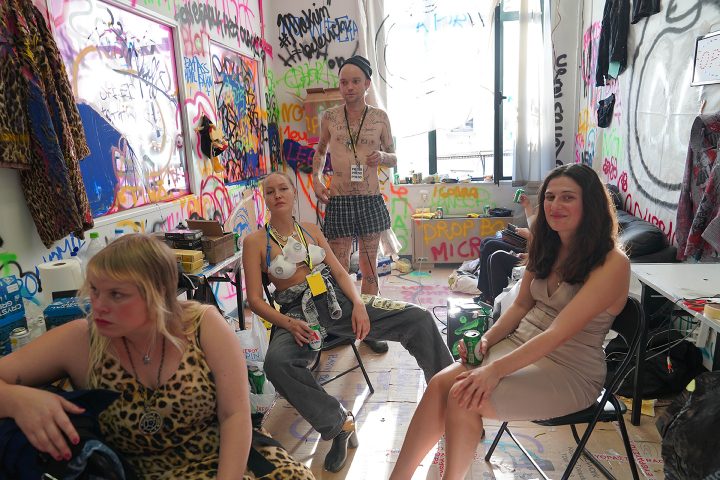
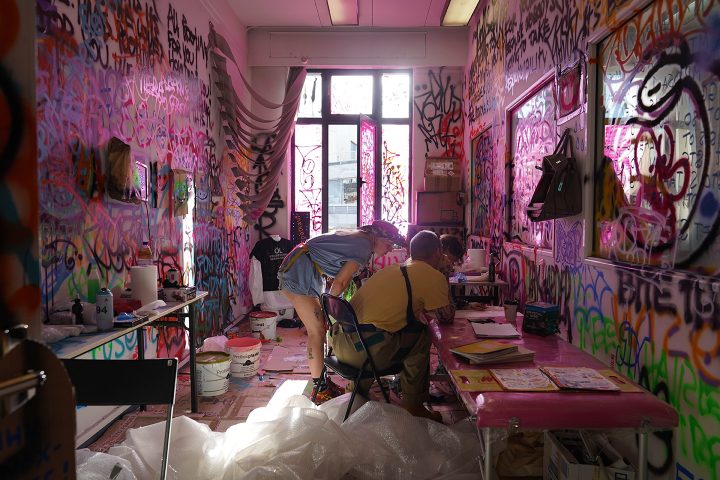
EVERYDAY FETISHES
For Leaning Horizontal II (2018) Sirous Namazi propped a supermarket shelf up against a wall at a 45°-angle. The shelf is full of Greek groceries which, according to the show’s catalog, signal the “economic asymmetry of opulence versus poverty” that Greece is currently living. Still, the shelf is full, I am thinking as I remember, for example, Cuba and the empty shelves I saw there. In Pre-Incaic Moche mythology the Pachacuti is the time when objects rebel against humans, reversing the roles, in other words, it’s the carnival of the things. This makes sense when I look at sculptures. Spa & Beauty (2018) by Geumhyung Jeong shows a compilation of domestic beauty care utensils and videos, specifically focused on feet and parts of the body that need to be rubbed. In one of the videos, a housewife confesses “I have a fetish for feet.” Here, brushes and textures massage the skin and – supposedly – the soul as well.
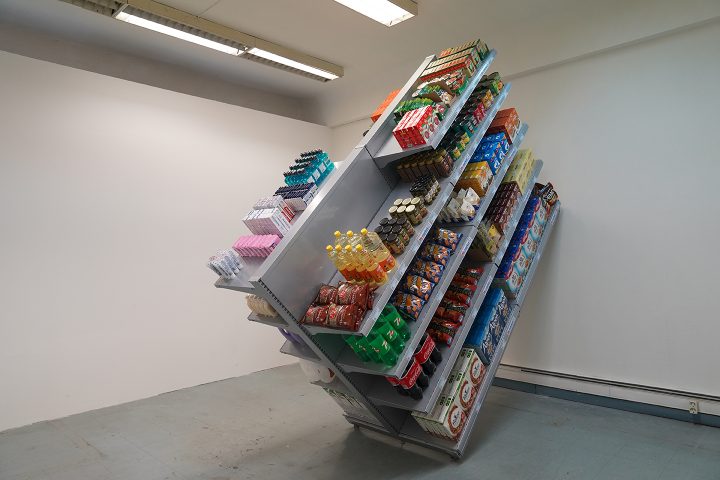
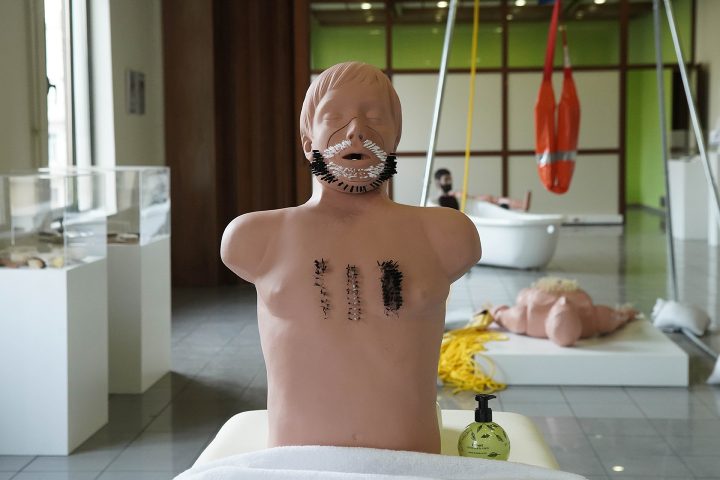


PASTEL GOTH
Close to the entrance to one of the main venues, the former Esperia Palace Hotel, Alice Potts, shows SWEAT (2018), a fashion-science project sponsored by the Onassis Foundation that I imagine could be pitched to Channel. Potts has treated used ballet slippers with a chemical process that grew the sweat from the ballerinas’ feet into crystals encrusting the shoes in transparent shades of cute-hardcore, pastel goth. SWEAT is not officially part of the Biennale, but because of its placement and the lack of a clear separation, it shows up in a number of reviews. How and why it’s exhibited alongside the show, remains unclear, but I like it. Turkish artist Pınar Öğrenci shows her LED Light City Istanbul (2013-2015) a blinking, puzzle-like video composition of red, pink and purple LED signs. The screens are suspended from the ceiling underneath a stained-glass window. The hanging alludes to surveillance screens or airport flight information boards. Looking at these works, I start sorting them into the aesthetic categories that the theoretician Sianne Ngai has suggested for contemporary culture: the cute, the zany and the interesting. Much of what I see at this biennial fits her system.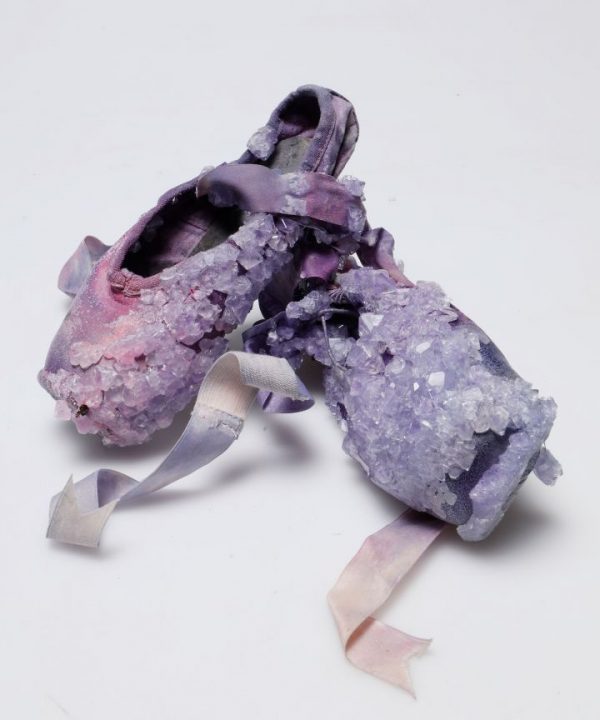
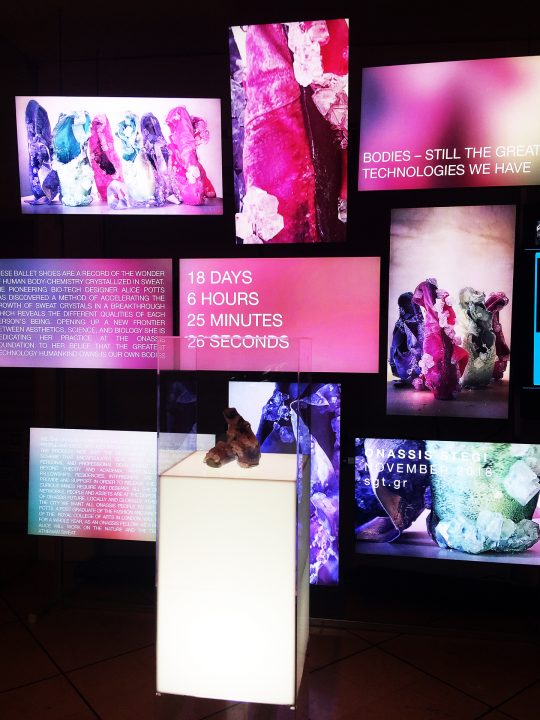

ENERGOLATERIA (worshipping of energy)
Going from sweat to the odors that camouflage it, deodorants, I find Raja’a Khalid’s installation Olimpiacos FC/AX (2018). A group of heraldic flags, bearing the sign of a football club have been saturated with the penetrating and unbearable aroma of Axe antiperspirant. I force myself to stay in the small room and not escape, as if I were forced to hug someone, worrying that I will stink of their perfume for the rest of the day. This is what I imagine football players and provincial teens would smell like; a parody of masculinity. In another room, the collective Front Deutscher Äpfel simulates a neo-Nazi organization, declaring “we can all make our own fascist movement.” In its flag: an apple, the first fruit named in the Bible. This satire of a fascist collective appears outdated and quite naïve to me today when the alt-right culture has embraced smug irony and produces its own satire, such as Pepe the Frog, the Republic of Kekistan and other memes and hoaxes. When irony becomes the preferred expression of the fascist curious[1] political spectrum, it needs to be seriously looked at and retooled. I somehow find the political marketing campaign for EXIT Deutschland much more interesting. EXIT Deutschland raised 10 euros for every meter marched by neo-Nazi groups and donated the money to a program helping young people in Germany to get away from extremist groups.[2] Could this campaign, packaged and PR-ed differently, have been art? It definitely would have been more ambitious and effective than the Front Deutscher Äpfel. Agency Medusa Bionic Rise (2017-18) by the artist’s group The Agency is a sprawling combination of laboratory, gym and corporate office that is activated by live performances. The work proposes a regimen of post-human training and body modification through proteins and prostheses and what not. It has a queer, DIY, anti-hero vibe. It also relies heavily on the aesthetics of Insta-famous countercultural celebrities, such as @internetgirl who has currently 217k followers. The agency has 912 followers. Something changes when things become art. Marianna Simnett’s The Needle and the Larynx (2016) is a disturbing single-channel video showing the artist undergoing a surgical intervention that is supposed to make her voice more masculine and hence more serious. But the operation, instead of giving her a powerful voice, makes it difficult for her to breathe. We see a surgeon sticking a needle into her throat, trying to paralyze different parts of her larynx. It is hard to watch and ends in dreamlike horror.
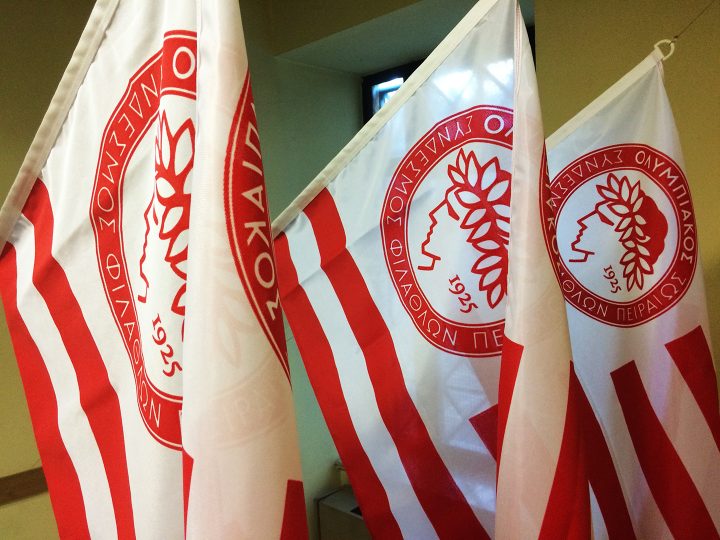
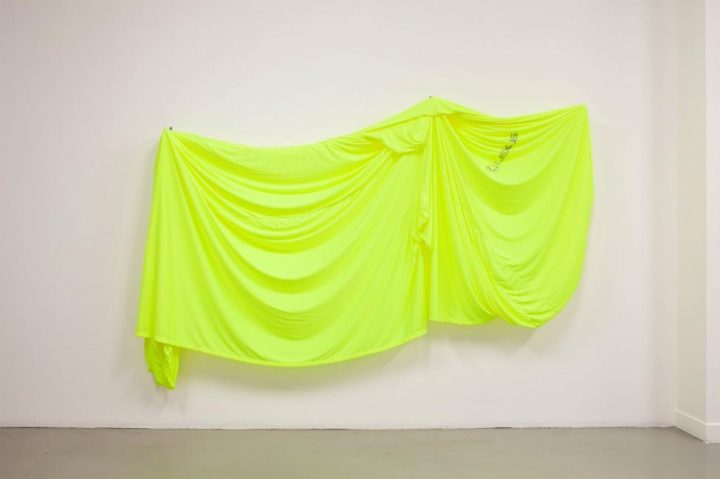
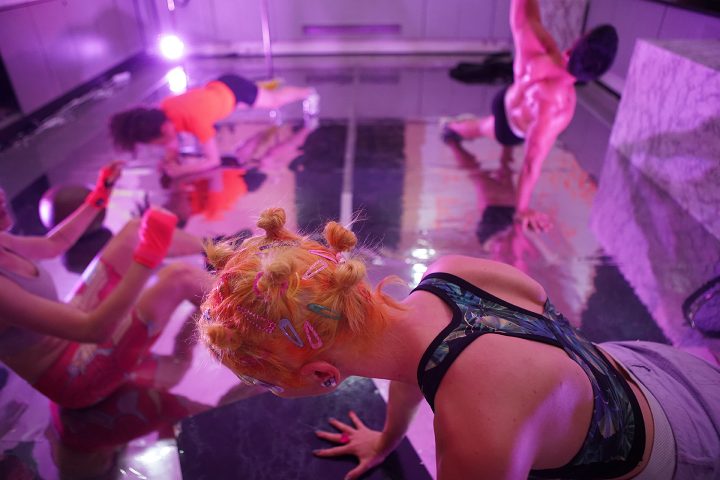
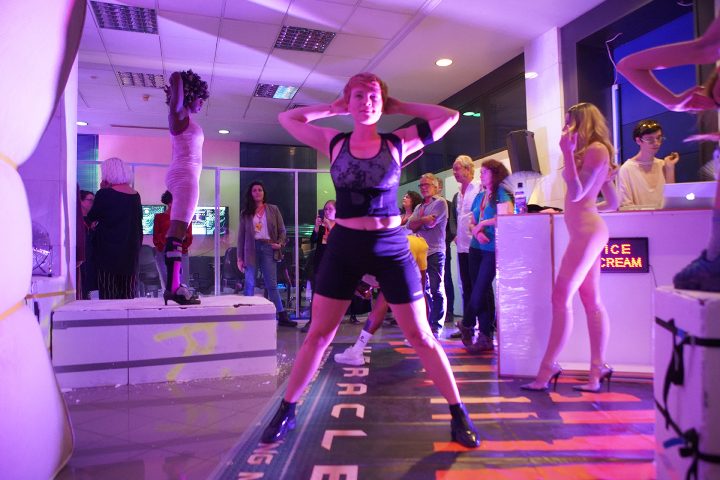
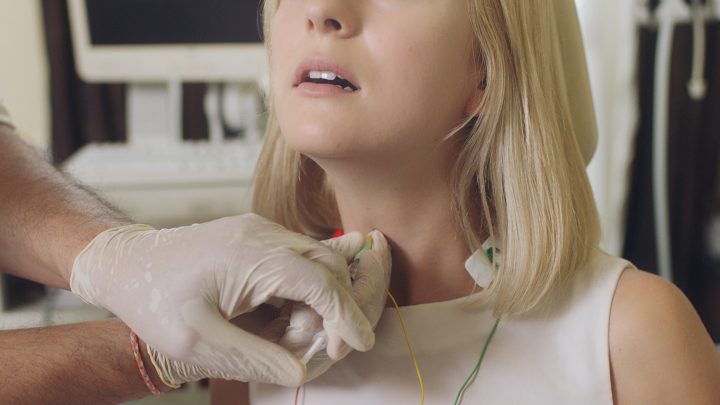
BACK TO ME
I take pictures wearing my press pass. I feel like a tourist. At the opening party, I see a white woman wearing a t-shirt that says “TOURIST.” Her dance is that typical European attempt at tribal dance, but she’s still cool. I say hello to a Scandinavian artist, whom I know. She asks me if I was planning to have children soon. I rapidly leave and enter the heart of the party. I show off some Latin dance moves together with the Ecuadorian artist Jazmín Taco. A TV camera team shows up from nowhere and starts filming us up close. We laugh in complicity and joke: “Up North, people don’t talk to us, and here they treat us like stars!” The ancient sculptures revered for their pureness and whiteness by Northern Europeans were actually candy-colored. The Biennale makes think of the reggaetonera and matriarch of neoperreo, Tomasa del Real who, when asked if she was a feminist, answered that she was beyond the isms. I’ll keep on chewing on the biennial and everything that happened here for a while.
FOMO
As an event, the show is spectacular and its sensuality is generous towards the audience. But, such attractiveness does not exist without a context. I wonder what does this seductiveness and apparent need for attention mean? It’s not that clear. In other words, why does the Biennale circulate so obsessively around a generational aesthetic of memes and social media? The Chilean poet and narrator, Alejandro Zambra, says that literature comes out of a need for belonging. I wonder if this eagerness to please might be a sign of art workers’ fear of not belonging to the bigger picture. From this perspective, the Biennale has a closer relation to momentum, the notion of Kairos, opportunity, than to the contemporary as a critical attitude. Another thought: just as 19th Century Europeans looked for the picturesque, trying to find painterly aesthetics wherever they went, we may now chase the instagramesque.[3] And how, I wonder, will this aesthetic frame, which accommodates queer Berlin hipsters alongside alt-right trolls, shape reality?
THE ORACLE
In Delphi, the site of the ancient oracle, the Russian curator Denis Maksimov tells a group of students how Greek mythology consists of narratives of rivaling regimes of power. He is not paid for the talk. Delphi specifically exemplifies how the matriarchal myth of Gaya was violently replaced by the cult of Apollo. Suddenly, Maksimov is interrupted by two state-employed tour guides who inform him that there is a 10.000 Euro penalty on speaking to groups of more than three persons at the archeological site. They threaten to denounce him to the authorities. Let’s put it clearly: the state owns the narrative. I only know about this telling incident, because Jazmin Taco recorded it on her iPhone.[4] She sidled up to the group and documented the exchange. Whenever one of the guides asked her to stop filming, she turned the camera on her own cleavage, puckered her lips and pretended to be posing for Snapchat. Is this an example of the instagramesque in the service of critique?
[1] Ana Teixeira Pinto: Artwashing – on NRx and the Alt right (2017) https://www.textezurkunst.de/articles/artwashing-web/
[2] https://www.theguardian.com/world/2014/nov/18/neo-nazis-tricked-into-raising-10000-for-charity
[3] Ruminations on Ruinations, Elizabeth Scarbrough. The Philosophers Magazine (2018).
[4] Piece shown at nomade, a one-day exhibition and event of students from HFK Bremen and invited local artists at Circuits and Currents art space, Athens 2018.

 Español
Español